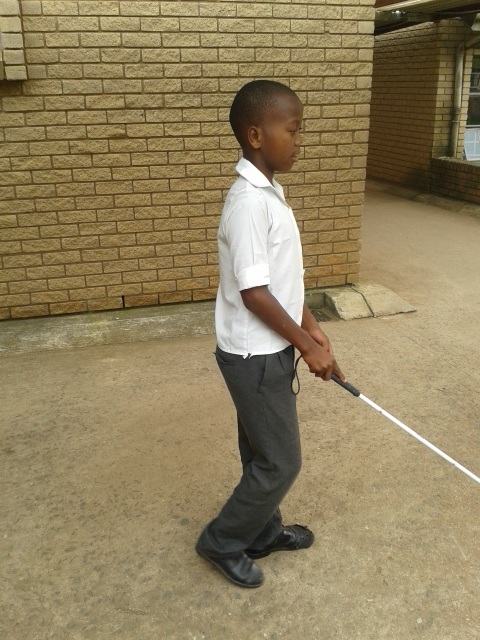We believe the long white cane is a means to independence. The white cane has proved a useful tool to millions of blind people in navigating their environments with confidence and safety. It is a tool which allows blind people to travel where and when they want, and as such leads to self-sufficiency.
We believe that independence and freedom to travel are so important to the quality of life of blind people that every blind person should have a cane and be trained in its use.
This page was created to aid instructors in teaching about the use of the white cane. By sharing this gift with the blind you also open the door to share the even greater gift of the love of Jesus Christ.
Download
“I once was blind but now I see.”
- John Newton
Mobility Training 101 (English)
Cane Basics

The proper length of the white cane for beginners should be from the ground to arm pit. Experienced cane users may prefer a longer cane.
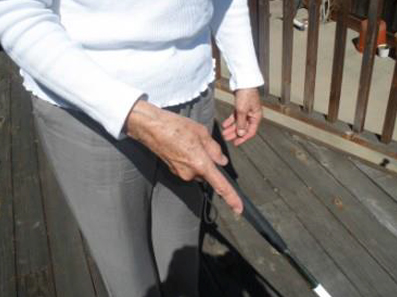
The proper hand & cane position is to orient the hand with the thumb on top of the cane, the index finger pointing down the shaft of the cane and the remaining fingers wrapped around the bottom. Think of shaking hands with your index finger pointing straight out along the other person’s wrist.

The top of the cane should be centered in the middle of the body about waist height. The top of the cane will remain in this general location while walking and sweeping.

Try to keep the tip of the cane in the area not much wider than shoulder to shoulder. This will restrict the information to what is directly in front of the body.
The cane crosses in front of the body side to side, opposite of the foot stepping forward i.e. as the right foot steps forward the cane crosses to the left.

Walking Up Stairs
Again use the railing if available. And, again, use the cane to measure the height of the steps.
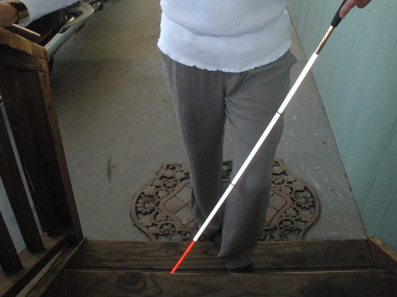
Push the tip of the cane against the back of the next step. Touch each riser to measure the depth of the step. At the top of the stairs, perform another sweep for obstructions.

Walking Down Stairs
If the stairs have a railing, hold on to the railing and hold the cane in the opposite hand. Use the cane to measure the height of the steps. At the bottom of the stairs the cane will touch the ground to let you know there are no more steps. Sweep for obstacles before taking the next step.
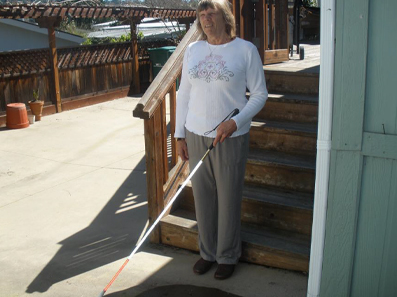
Sweeping
Sweeping is performed prior to moving into an unknown area or where there is a change of the elevation. Without moving forward, sweep the tip of the cane from side to side searching for obstructions and/or hazards.
Walking With A Sighted Guide
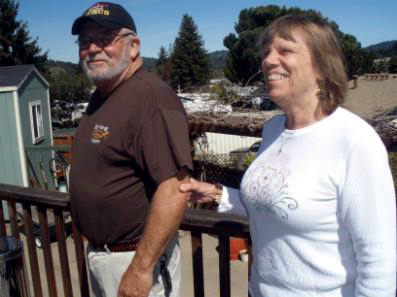
Guide offers elbow. With a sighted person guiding, take the offered elbow and keep one half step behind the guide. The body position of the guide will give you information such as changes of direction or elevation.

When the path ahead is restricted, the sighted guide should put one hand behind his/her back. This movement indicates to the blind person to move directly behind the sighted guide.
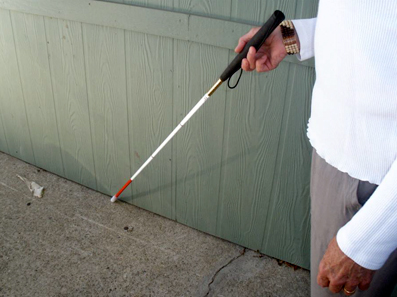
Trailing
Trailing involves feeling the edge of the road, path or wall with the tip of the cane. This technique is used when there is no defined path available to walk on.
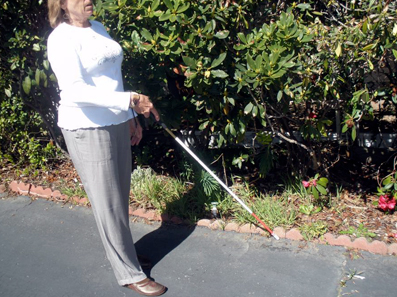
Walk with the cane as previously instructed. Use the edge of the wall or path as a point of reference ensuring the cane tip comes in contact as it moves to that side.
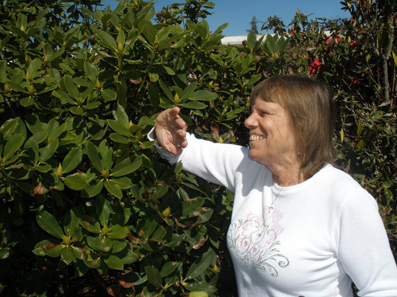
Protect the head by placing a hand in front of the head to feel any hazards before they can cause injury to the head.
Leviticus 19:14 (NIV)
“‘Do not curse the deaf or put a stumbling block in front of the blind, but fear your God. I am the Lord."


